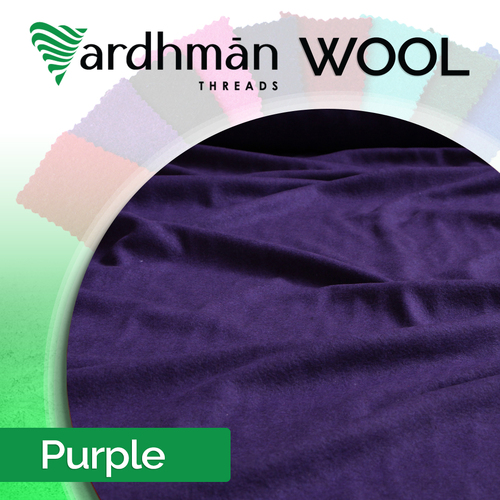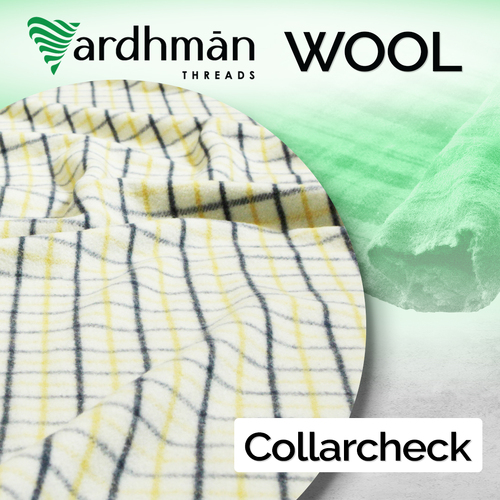WOOL FABRIC
Wool fabric, revered for centuries, has remained a staple in the textile industry due to its unique qualities, versatility, and sustainability. From luxurious suits and warm winter coats to cozy blankets and durable carpets, wool fabric serves a wide range of purposes, making it one of the most sought-after materials in the world.
Origins and Types of Wool
Wool is a natural fiber obtained primarily from sheep, although it can also come from other animals such as goats (cashmere and mohair), rabbits (angora), and alpacas. The process of obtaining wool involves shearing the animals, cleaning the wool, and then spinning it into yarn. The quality of wool varies depending on the breed of the animal, the climate they are raised in, and the care given to the animals.
There are several types of wool, each with distinct characteristics:
- Merino Wool: Known for its softness and fine texture, Merino wool is highly prized in the fashion industry. It comes from Merino sheep, primarily raised in Australia and New Zealand. Merino wool is incredibly soft against the skin, making it ideal for high-quality clothing.
- Cashmere Wool: Derived from the undercoat of cashmere goats, cashmere wool is one of the most luxurious and expensive types of wool. It is exceptionally soft, lightweight, and warm, often used in high-end sweaters, scarves, and shawls.
- Lambswool: Lambswool is the first shearing of a sheep, typically when the sheep is around seven months old. It is soft, smooth, and resilient, making it ideal for garments that are worn close to the skin.
- Mohair Wool: Produced from the hair of the Angora goat, mohair is durable, resilient, and has a natural sheen. It is often used in suits, scarves, and blankets.
- Alpaca Wool: Sourced from the alpaca, primarily found in South America, alpaca wool is softer, warmer, and lighter than sheep's wool. It is hypoallergenic and is often used in luxury garments and blankets.
- Shetland Wool: Originating from the Shetland Islands in Scotland, Shetland wool is known for its durability and warmth. It is often used in traditional knitwear, such as Fair Isle sweaters.
The Unique Properties of Wool
Wool is celebrated for its remarkable properties that make it a preferred material for a variety of uses:
- Insulation: Wool is an excellent insulator, providing warmth in cold weather and keeping cool in warm weather. Its natural crimp creates tiny air pockets that trap heat, making it ideal for winter clothing and bedding.
- Moisture-Wicking: Wool can absorb up to 30% of its weight in moisture without feeling wet, making it highly effective at wicking away sweat from the body. This property keeps the wearer dry and comfortable, even during intense physical activity.
- Breathability: Wool's natural fibers allow for excellent airflow, preventing overheating. This breathability is one reason wool is favored for activewear and outdoor clothing.
- Elasticity: Wool fibers are naturally elastic, allowing garments to stretch and return to their original shape. This makes wool clothing durable and resistant to wrinkles, maintaining a polished appearance over time.
- Fire Resistance: Wool is naturally fire-resistant due to its high nitrogen and water content. It does not melt or stick to the skin, making it a safer option for garments and upholstery.
- Odor Resistance: Wool has natural anti-microbial properties, meaning it resists the growth of bacteria that can cause odors. This makes wool clothing ideal for long-term wear, particularly in outdoor and active settings.
- Sustainability: Wool is a renewable and biodegradable resource. Sheep can be shorn annually, and wool naturally decomposes in soil, releasing valuable nutrients. The production of wool also has a lower environmental impact compared to synthetic fibers, making it an eco-friendly choice.
Uses of Wool Fabric
Wool fabric's versatility allows it to be used in a wide range of products:
- Clothing: Wool is a popular choice for outerwear, such as coats, jackets, and suits, due to its warmth, durability, and natural elegance. Fine wool, like Merino and cashmere, is often used for sweaters, scarves, and other garments worn close to the skin.
- Home Textiles: Wool is commonly used in blankets, throws, and rugs, providing warmth and comfort in the home. Its durability makes it ideal for high-traffic areas, and its fire-resistant properties add an extra layer of safety.
- Carpets and Upholstery: Wool's resilience and natural stain resistance make it a preferred material for carpets and upholstery. It can withstand heavy use while maintaining its appearance, making it a long-lasting choice for home and commercial settings.
- Industrial Uses: Wool is also used in industrial applications, such as insulation for buildings and soundproofing materials. Its natural properties make it an effective and sustainable choice for these purposes.
Caring for Wool Fabric
Proper care is essential to maintain the quality and longevity of wool fabric. Wool garments should be washed in cool water with mild detergent, either by hand or on a gentle machine cycle. It's important to avoid excessive agitation, as this can cause the wool to felt and shrink. Wool should be dried flat, away from direct sunlight and heat sources, to prevent damage to the fibers.
For items like wool coats and suits, dry cleaning is recommended to preserve the fabric's structure and appearance. Regular brushing and airing out wool garments help maintain their freshness and extend their life.
Wool Fabric at Vardhman Threads A&E Australia
Vardhman Threads A&E Australia stands as a leading name in the textile industry, offering a wide range of high-quality wool fabrics tailored to meet diverse needs. Renowned for their commitment to excellence, Vardhman Threads A&E Australia sources premium wool from the finest suppliers, ensuring that each product delivers exceptional performance, durability, and aesthetic appeal.
Wool fabric from Vardhman Threads A&E Australia is known for its superior quality, derived from carefully selected wool fibers that offer remarkable softness, warmth, and resilience. These fabrics are ideal for various applications, including fashion, home textiles, and industrial uses. Whether you're crafting a luxurious coat, a cozy blanket, or durable upholstery, the wool fabrics from Vardhman Threads A&E Australia provide the perfect balance of elegance and functionality.
What sets Vardhman Threads A&E Australia apart is their dedication to sustainability. The wool fabrics offered are not only renewable and biodegradable but also produced with a focus on minimizing environmental impact. This commitment to eco-friendly practices makes their wool fabric an excellent choice for those who prioritize sustainability without compromising quality.
In addition to their high standards, Vardhman Threads A&E Australia offers a wide range of wool fabric options, catering to various preferences and requirements. From fine Merino wool for premium clothing to durable wool blends for heavy-duty applications, their collection is designed to meet the needs of discerning customers.
By choosing wool fabric from Vardhman Threads A&E Australia, you are assured of a product that combines tradition, innovation, and sustainability, making it the ideal choice for any textile project.
Fabric Australia
Vardhman Threads is one of the leading stockists of trusted brands of fabrics in Australia. Our goal is to bring back personal service in an industry that has lost its friendly touch. Apart from high quality fabrics, we also supply webbings, bindings, fittings, and sewing threads at reasonable prices.
Vardhman Threads also aim to provide the best quality fabrics, webbings, and threads. Thus, we ensure that all products we sell at our store are made from premium-grade raw materials. All the parts and fittings that we house have been sourced from all over the world. We distribute our high-quality products not only in Australia but also in New Zealand.




















